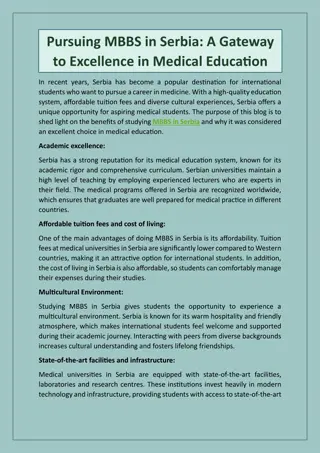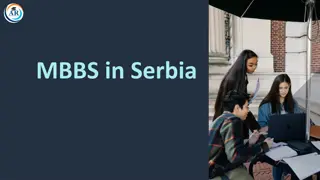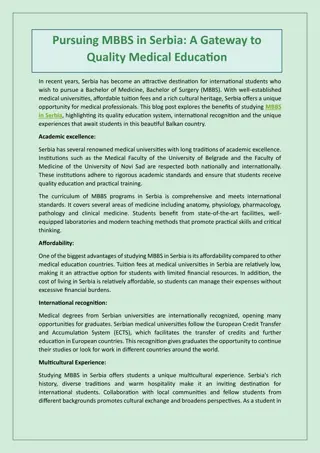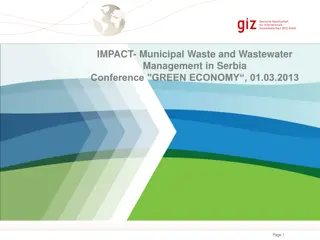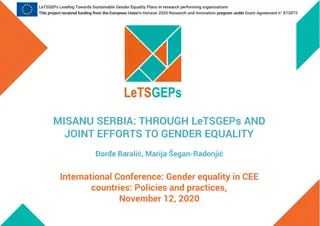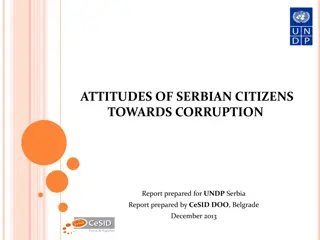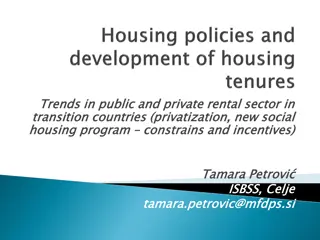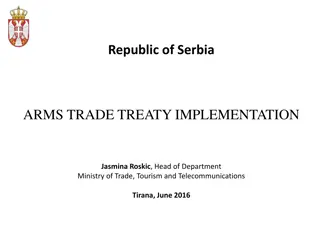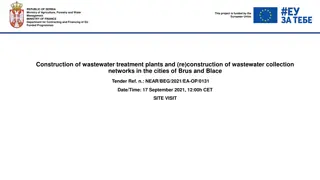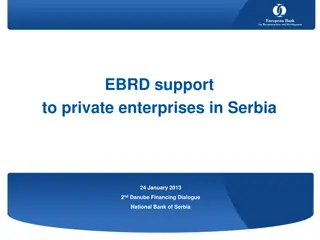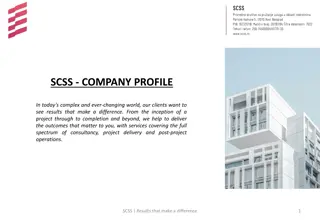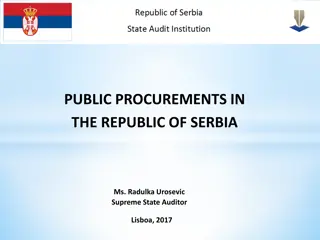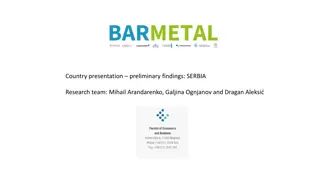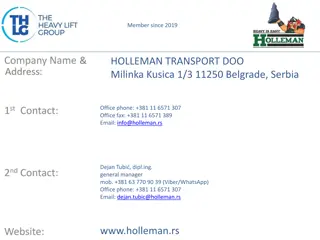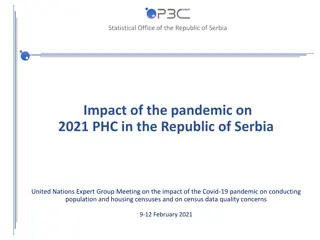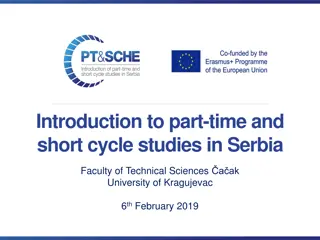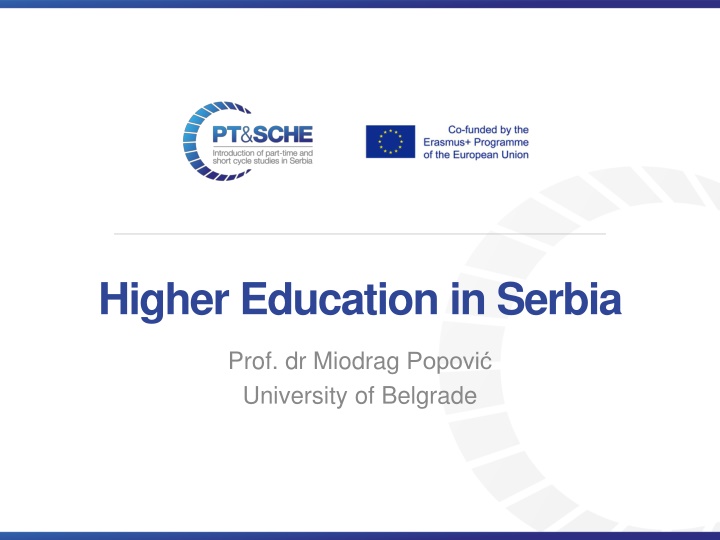
Higher Education System in Serbia: Legal Framework and Structure
Explore the higher education system in Serbia, including the legal framework, governing bodies, bylaws, and national qualification framework. Learn about the main principles of the Law on Higher Education and the structure of higher education in Serbia. Discover the roles of institutions like the National Council for Higher Education and the Conference of Serbian Universities in ensuring quality education and accreditation standards.
Download Presentation

Please find below an Image/Link to download the presentation.
The content on the website is provided AS IS for your information and personal use only. It may not be sold, licensed, or shared on other websites without obtaining consent from the author. If you encounter any issues during the download, it is possible that the publisher has removed the file from their server.
You are allowed to download the files provided on this website for personal or commercial use, subject to the condition that they are used lawfully. All files are the property of their respective owners.
The content on the website is provided AS IS for your information and personal use only. It may not be sold, licensed, or shared on other websites without obtaining consent from the author.
E N D
Presentation Transcript
Higher Education in Serbia Prof. dr Miodrag Popovi University of Belgrade
Legal framework Law on Higher Education (2005) Regulates all aspects of higher education except science and research activities. Amended and revised several times. Major revisions in 2010 and 2014. Law on Scientific Research (2005) Regulates science and research activities of higher education institutions. Amended and revised several times. Major revision in 2015. Strategy on Education Development until 2020 (Approved by the Government of the Republic of Serbia) Action plan for implementation of the Strategy (Approved by the Government of the Republic of Serbia) *
Law on Higher Education Main principles: Three-cycle structure, two types of studies (academic and professional), introduction of ECTS, licencing, quality assurance, accreditation of institutions and study programs, mobility of students and academic staff, etc. Governing bodies: National Council for Higher Education (NCHE), elected by The National assembly Commission for Accreditation and Quality Assurance (CAQA), elected by the NCHE Conference of Serbian universities Conference of Serbian high schools Student conference of Serbian universities Student conference of Serbian high schools *
Bylaws (Approved by The Ministry of Education, Science and Technological Development) Decree of normatives and standards for work conditions in universities and faculties for activities which are financed from the budget (2002) Decree of issuing of public certificates etc *
Bylaws (Approved by The National Council of Higher Education) Rules and Regulations on accreditation standards and procedures of higher education institutions and study programs (2006) List of professional, academic and scientific titles with the indication of occupation in respective degrees Rules and Regulations on self-assessment and quality review of higher education institutions (2006) Rules and Regulations of external quality control of higher education institutions and procedure for external quality control in the higher education institutions (2006) etc. *
National Qualification Framework 8 levels of qualification Levels 6, 7 and 8 are devoted to the Higher education Level 6.1: bachelor academic studies, 180 ECTS bachelor professional studies, 180 ECTS Level 6.2: bachelor academic studies, 240 ECTS) specialist professional studies, 180+60 ECTS Level 7.1: master academic studies, 180+120 ECTS or 240+60 ECTS master professional studies, 180+120 ECTS integrated master academic studies, up to 360 ECTS Level 7.2: specialist academic studies, 60 ECTS Level 8.2: doctoral academic studies, 180 ECTS *
Some facts about HED in Serbia 8 public and 9 private universities Big universities (Belgrade, Novi Sad, Ni , Kragujevac) are not fully integrated (faculties can be legal entities) About 240 000 students Description of the Serbian education system is available in Eurydice https://webgate.ec.europa.eu/fpfis/mwikis/eurydice/index.p hp/Serbia:Higher_Education
Structure of income of universities and faculties Financing from the budget (only for universities founded by the state) Scholarships from students which should pay for their study Income from national scientific projects Income from international scientific and educational projects (FP7, Horizon2020, Tempus, Erasmus, etc) Commercial services to third parties Income from publishing Donations

